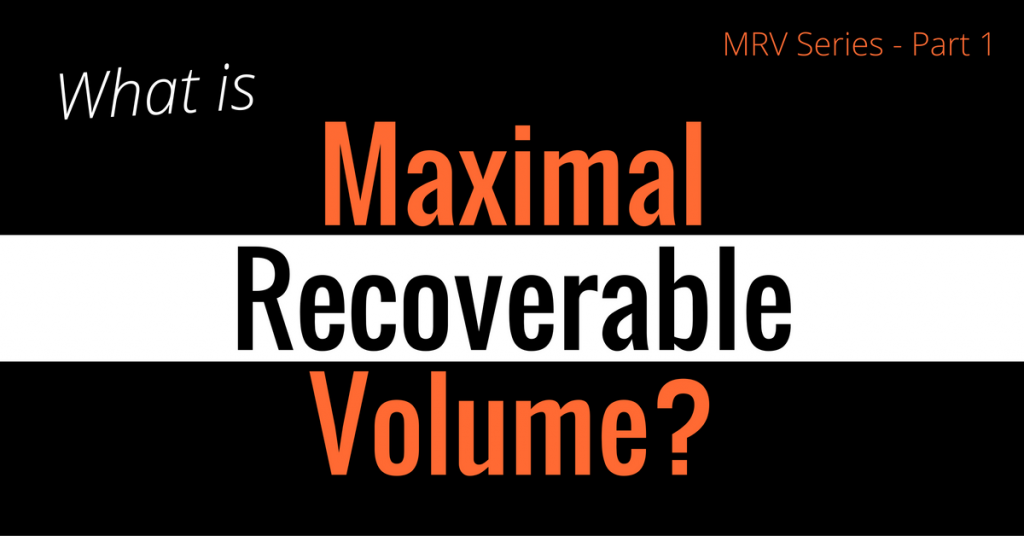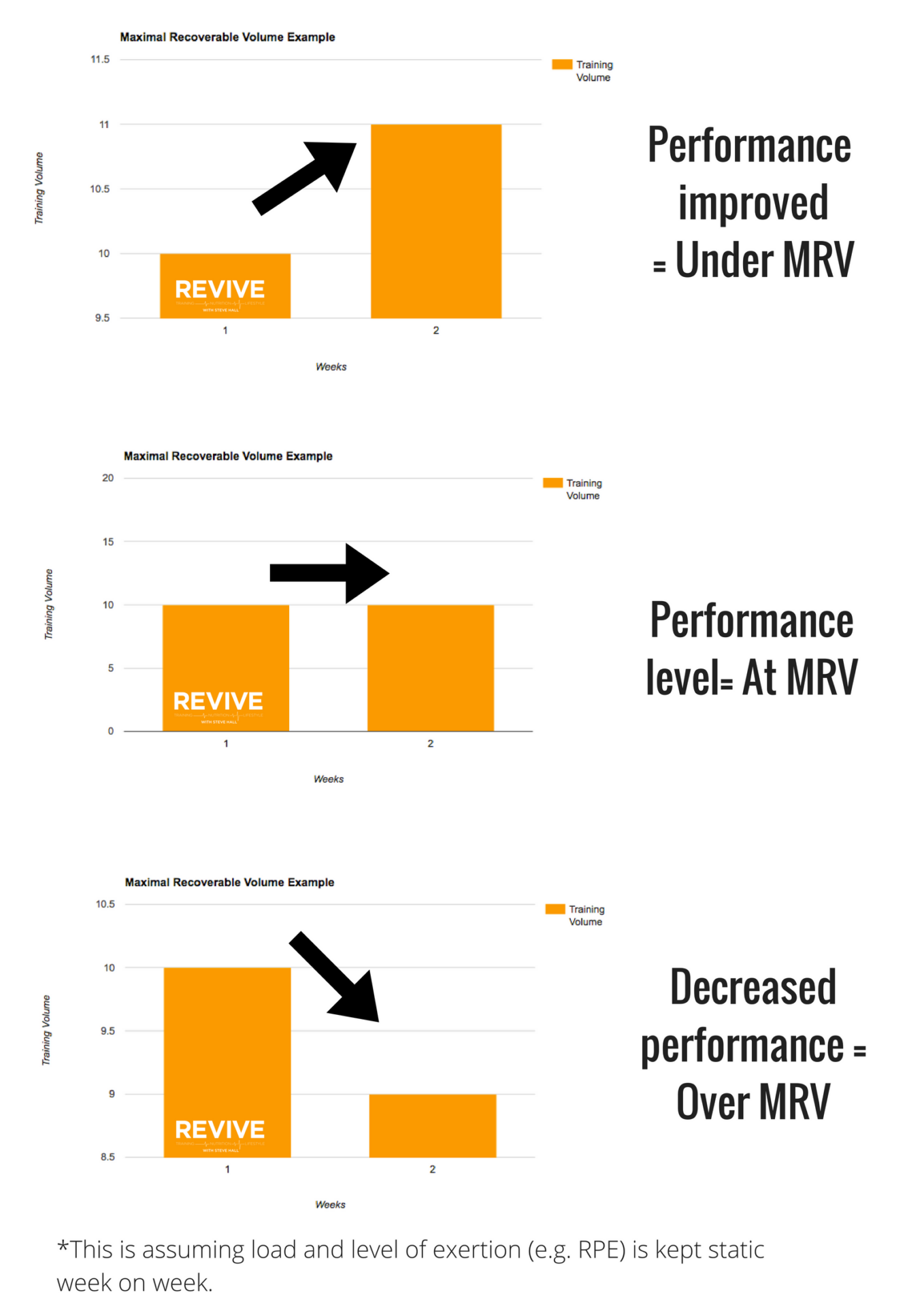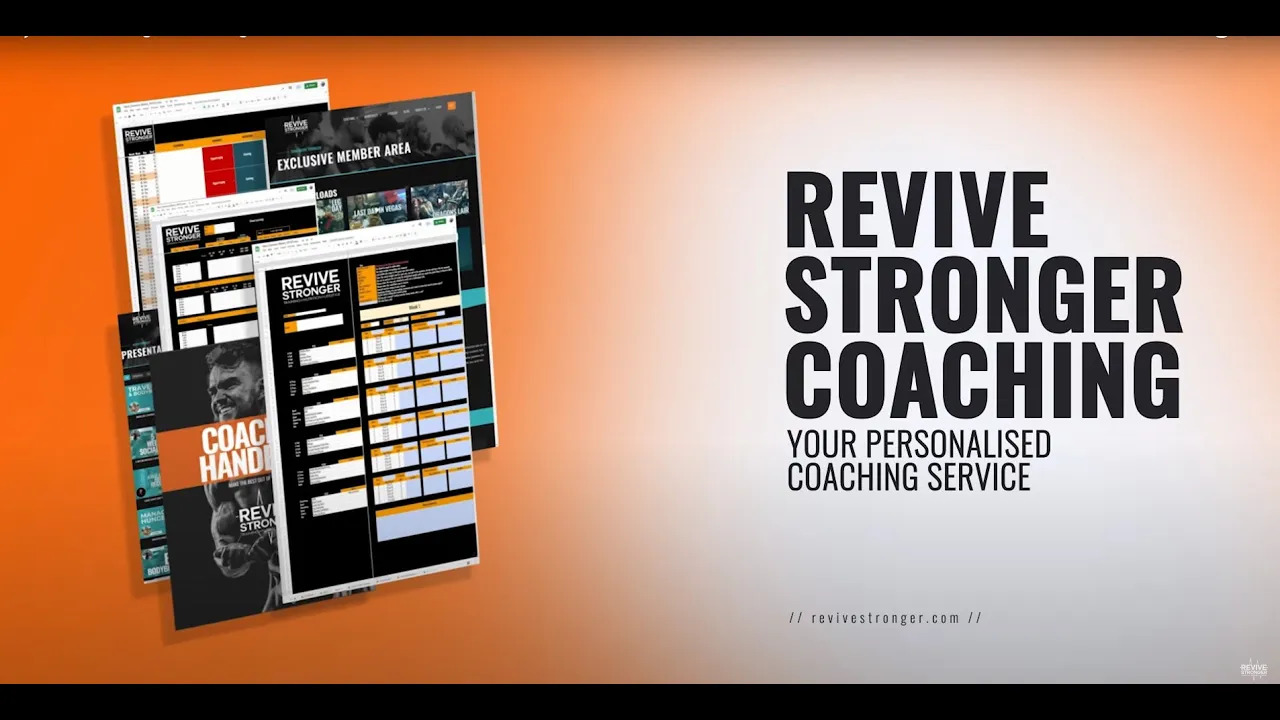
Revive Stronger
What is Maximal Recoverable Volume? [MRV Series Part 1]

I first came across MRV while reading The Scientific Principles of Strength Training.
Honestly, it really opened my eyes.
I have been using it within my own programming and with the clients at Revive Stronger to great success.
Furthermore, I’ve spent a lot of time learning from Mike Israetel, who came up with the concept of MRV. I now feel like I have a very good understanding of it and how you can apply it to your own training to maximise your results, and thus I am going to be doing a series of posts all about MRV.
OK, so what is MRV?
In short your MRV is the most you can do and recover from.
…right…
Table of Contents
What does that actually mean?
It is the most training you can do and still recover to do that same training next time, but no more.
- The most training = sets x reps x load (volume)
- Still recover for next time = you can still achieve those sets & reps for the given load & level of exertion
- But no more = you’re not improving or getting worse
[bctt tweet=”MRV is the most training you can do and still recover to do the same training next time, but no more.” username=”revivestronger”]
For example:
You do a total of 10 sets of squats at 120kg for 6 hard reps week 1 and you repeat this week 2.
You’ve done the most training you can do than you can recover from and repeat. However, if you improve or get worse you’re either under or over your MRV (as can be seen below).
Why is MRV a useful concept?
- Do less than your MRV: Theoretically if you did less than your MRV then you could have trained more, provided more overload, volume and time under tension and got better results.
- Do more than your MRV: If you do more than your MRV then you’re overreached, if you do not reduce the amount you’re doing performance will continue to decline and you’ll become overtrained and risk of injury increases.
In short: it gives you something to work towards.
If you’re anything like me and looking to gain as much muscle and strength as possible, then you for sure want to work towards your MRV. However, it’s also useful because it gives us something to avoid, we DO NOT want to breach our MRV chronically, that is a sure-fire way to see worse gains.
An analogy I like is Goldilocks and the Three Bears…
You know Goldilocks struggled to find the right porridge to suit her taste.
Some were too hot.
Others too cold.
As an individual we all have our own needs.
You see what is too hot for goldilocks might have been just right for big pappa bear.
He’s bigger, older, more experienced and can take the heat. — Now I haven’t gone mad, we can relate this to our training.
Just like little Goldilocks, we’re all different, we respond to training differently. Some of us may respond better to heavier weights and lower volumes, whereas others might need to do loads of lighter work in the gym. It’s all about finding the right mix, so our training is neither too hot or cold, most of the time at least.
Think of your MRV as your sweet spot, it’s not too hot or too cold, it’s just right.
This is where you want to be aiming to train most of the time.
[bctt tweet=”we respond to training differently” username=”revivestronger”]
— Why?
Because if you could do more, and recover, why wouldn’t you? — You’ll see faster results, and gain more muscle in a shorter period of time. So working towards your MRV is important, this is you’re not too hot or cold training, this is like the porridge you can sit down and enjoy.
Action points from todays article
Hopefully this has given you some food for thought.
Or maybe it’s just made you really hungry for porridge, either way you’re now better educated about training.
- What I want you to do is to look over your training and for each muscle group consider whether or not you think you could be doing more or should be doing less. Look at how you’re recovering and performing week on week, if you’re not anywhere close to being unable to recover, perhaps you could be doing more, if you’re gassed every week and seeing performance decrements, likely you should be doing less.
Finally I want you to look over the below graphic produced by the guys at Renaissance Periodisation (who produced the book Th Scientific Principles of Strength Training). Now in future articles I will touch on MED and MAV, but for now all I want you to look at is the fact we’re reaching your MRV once every number of weeks, not every week.
This is an important distinction to make, and as said before your MRV is something to work towards.
This is Part 1 of the MRV series.
I would like to credit and thank Mike Israetel for developing the concept that is MRV. In future I will be covering common questions asked regarding MRV and various nuances within the concept such as influencing factors and how to programme with MRV in mind.
==> Part 2: Bodybuilder MRV
WHAT NEXT?
If you liked this, you will love:
Join my free facebook group or add me on snapchat (revivestronger) and ask your question there, I will respond asap. Or if you’re after a fresh training programme I have a free 4 week plan using DUP that you can download for free here.
One more thing…
Do you have a friend who would love the above? Share this article with them and let me know what they think.
[bctt tweet=”What is Maximal Recoverable Volume? MRV Series Part 1″ username=”revivestronger”]
We are a personal coaching service that helps you achieve your goals. We want you to become the best version of yourself.








